A Journey Through Dafeng Milu Nature Reserve: Encounter Rare Wildlife and Breathtaking Scenery
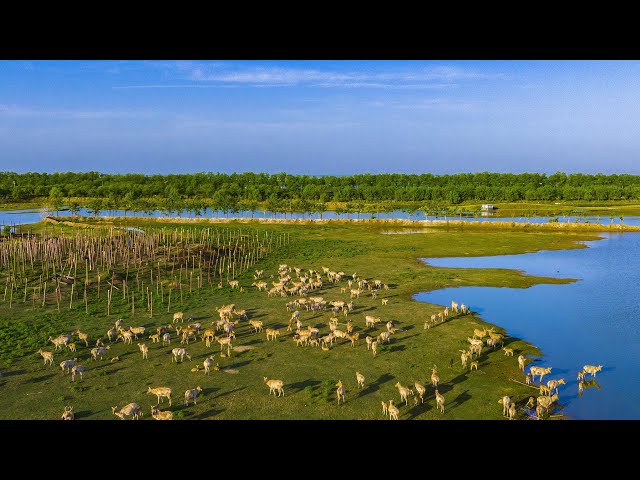
An Essential Guide to Visiting Dafeng Milu Nature Reserve
Nestled along the shimmering shores of the Yellow Sea, the Dafeng Milu Nature Reserve is not just a sanctuary for wildlife; it’s a realm where the majestic milu deer roam freely across lush wetlands, offering a rare glimpse into the delicate balance of nature. Often referred to as the “home of the milu,” this expansive reserve boasts the world’s largest population of these enchanting deer, alongside a vibrant array of other rare species, including the graceful red-crowned crane and the striking oriental white stork.
In this essential guide, you’ll discover everything you need to navigate this ecological treasure. From the best times to visit and unique wildlife experiences to practical tips on transportation, accommodation, and local cuisine, we’ll help you plan a seamless journey into one of China’s most captivating natural wonders. Whether you’re an avid birdwatcher, a nature lover, or simply seeking a tranquil escape from the hustle and bustle of city life, the Dafeng Milu Nature Reserve promises unforgettable adventures and mesmerizing sights. Get ready to immerse yourself in a world where nature reigns supreme and every moment is steeped in beauty.
In This Guide
- An Essential Guide to Visiting Dafeng Milu Nature Reserve
- The Rich History and Legends of Dafeng Milu Nature Reserve
- Main Highlights: What You Absolutely Can’t Miss
- Planning Your Visit: A Practical Guide
- Tickets: Prices, Booking, and Tips
- How to Get There: A Complete Transportation Guide
- Local Cuisine and Accommodation Nearby
- Frequently Asked Questions
- Final Thoughts on Your Trip
The Rich History and Legends of Dafeng Milu Nature Reserve
A Journey Through Time: The Rich History and Legends of Dafeng Milu Nature Reserve
Nestled along the shimmering coast of the Yellow Sea, the Dafeng Milu Nature Reserve is not just a sanctuary for wildlife but a tapestry of history and legends that enriches its natural beauty. This remarkable reserve, home to the world’s largest population of milu deer, has a storied past that intertwines with local folklore and ecological significance.
The Birth of a Sanctuary
The history of the Dafeng Milu Nature Reserve dates back to the early 20th century when the milu deer, also known as the Pere David’s deer, faced imminent extinction due to overhunting and habitat loss. In a heroic bid to save this unique species, efforts began in the 1980s to reintroduce milu deer to their native habitat in Dafeng. By 1990, the Dafeng Milu Deer Breeding Center was established, marking a pivotal moment in conservation history.
The reserve was officially designated in 1992, and since then, it has expanded to cover more than 1,000 square kilometers of diverse habitats, including woodlands, grasslands, and marshlands. This sprawling sanctuary is not only crucial for the milu deer but also supports a myriad of other endangered species, such as red-crowned cranes and white-tailed sea eagles.
The Legend of the Milu Deer
Embedded in the local culture are legends that speak of the milu deer as mystical creatures. One popular tale recounts how these deer were once the guardians of the wetlands, believed to possess the ability to control the tides and maintain the delicate balance of nature. According to folklore, the milu deer would dance gracefully at twilight, their movements syncing with the ebb and flow of the sea, ensuring bountiful harvests for the fishermen and farmers.
As the story goes, a fierce storm once threatened the region, endangering both the land and its inhabitants. The villagers prayed to the milu deer for protection. Moved by their devotion, the deer emerged from the misty marshlands, leading the animals and villagers to safety. In gratitude, the villagers vowed to protect the milu deer and their habitat, a promise that continues to resonate today.
Conservation Triumphs
Over the years, the Dafeng Milu Nature Reserve has become a beacon of conservation success. The milu deer population has surged from a mere handful to over 7,000, a testament to effective breeding and habitat restoration efforts. The reserve is now recognized as a UNESCO World Heritage Site, emphasizing its global ecological importance.
Moreover, the reserve has embraced eco-tourism, allowing visitors to appreciate the beauty of the milu deer and their surroundings while fostering a deeper understanding of conservation efforts. Guided tours and educational programs share the rich history of the reserve, inviting travelers from around the globe to witness the extraordinary revival of this once-endangered species.
Nature’s Poetry: The Red-Crowned Crane
Alongside the milu deer, the Dafeng Reserve plays host to the majestic red-crowned crane, another symbol of hope and endurance. These elegant birds are celebrated in Chinese culture as harbingers of good fortune and longevity. Local legends tell of cranes that once descended from the heavens to teach humans the art of harmony and balance, embodying the spirit of the wetlands.
During winter months, the reserve transforms into a haven for these cranes, drawing in birdwatchers and nature enthusiasts eager to witness their graceful dance against the backdrop of the serene marshlands. The arrival of the cranes is celebrated by the community, with festivals that honor their migratory journey and highlight the importance of preserving their habitat.
Conclusion: A Living Legacy
The Dafeng Milu Nature Reserve is more than just a conservation area; it is a living legacy of nature’s resilience and the profound connection between humans and wildlife. The intertwining of history and legends not only enriches the visitor experience but also serves as a reminder of the ongoing commitment to protect this ecological treasure. As travelers explore the reserve, they become part of a narrative that celebrates the past while nurturing the future, ensuring that the calls of the milu deer and the graceful dance of the red-crowned crane will echo through the wetlands for generations to come.
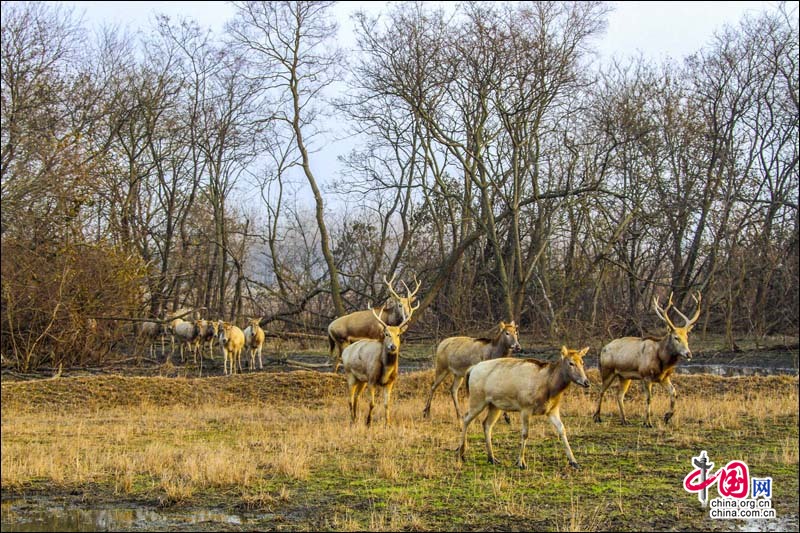
Dafeng Milu Nature Reserve.
Main Highlights: What You Absolutely Can’t Miss
Explore the Free-Range Milu Deer Area
Step into the heart of the Dafeng Milu Nature Reserve, where the world’s largest population of milu deer roams freely across lush wetlands. Hop on a sightseeing car to get an up-close look at these majestic creatures in their natural habitat. Watch them graze, leap, and even engage in playful sparring, particularly during the spring mating season. Don’t forget your camera—the sight of these unique deer against the backdrop of shimmering waters and verdant reeds is nothing short of magical.
Tip: Bring some carrots to feed the deer for an interactive experience! A small basket typically costs around ¥10.
Visit the Milu Deer Museum
After your wildlife encounter, make your way to the Milu Deer Museum, where you can delve deeper into the fascinating history of these endangered animals. Learn about their near extinction and the conservation efforts that have led to their revival in this reserve. The museum’s engaging displays and informative exhibits provide a perfect complement to your outdoor adventures.
Tip: Allocate at least 30 minutes for the museum to fully appreciate its insights.
Marvel at the “World’s Number One Deer” Sculpture
No visit to the reserve would be complete without a photo op at the iconic “World’s Number One Deer” sculpture. This striking piece of art celebrates the milu deer’s significance and serves as a popular landmark within the park. With its impressive size and artistic flair, it’s a must-see for both photography enthusiasts and nature lovers alike.
Tip: Visit early in the morning or late afternoon for the best lighting and fewer crowds.
Birdwatching at the Jiangsu Yancheng National Rare Bird Nature Reserve
Just a short drive from the milu park lies the Jiangsu Yancheng National Rare Bird Nature Reserve, a haven for birdwatchers. This area boasts the largest wild red-crowned crane wintering ground in the world. If you’re visiting between November and March, don’t miss the chance to witness the breathtaking sight of these cranes taking flight. The reserve also features various birdwatching towers and a scenic boardwalk to enhance your viewing experience.
Tip: Bring binoculars and a camera to capture the stunning avian displays, especially during the crane release shows that happen daily.
Stroll Through the Wetland Boardwalk
For a tranquil escape, take a leisurely stroll along the wetland boardwalk that meanders through the reserve. This scenic path allows you to immerse yourself in the serene environment while spotting various migratory birds, swans, and egrets. The gentle sounds of nature and the panoramic views make it a perfect spot for reflection and photography.
Tip: Visiting during sunrise or sunset can provide stunning views and a peaceful atmosphere, perfect for nature lovers.
Discover the Ecological Education Center
Enhance your understanding of the unique ecosystem of the Dafeng Milu Nature Reserve by visiting the Ecological Education Center. Here, you can learn about the different habitats within the reserve, the importance of biodiversity, and the conservation efforts in place to protect these precious environments. The center often hosts interactive exhibits and educational activities, making it a great stop for families and school groups.
Tip: Check the schedule for any workshops or guided tours that may be available during your visit.
Enjoy Local Cuisine at a Nearby Restaurant
After a day of exploration, treat yourself to the local flavors at a nearby farmhouse restaurant. Sample authentic dishes made from fresh, seasonal ingredients, including local specialties like “Wuyou drunken snails” and fresh fish soup. Dining here not only satisfies your hunger but also supports local farmers and preserves culinary traditions.
Tip: Look for menu items that feature ingredients sourced from the nearby wetlands for a true taste of the region.
Visiting the Dafeng Milu Nature Reserve offers an unforgettable journey into China’s natural beauty and wildlife conservation efforts. Each highlight presents unique opportunities for adventure, learning, and appreciation of this ecological treasure.
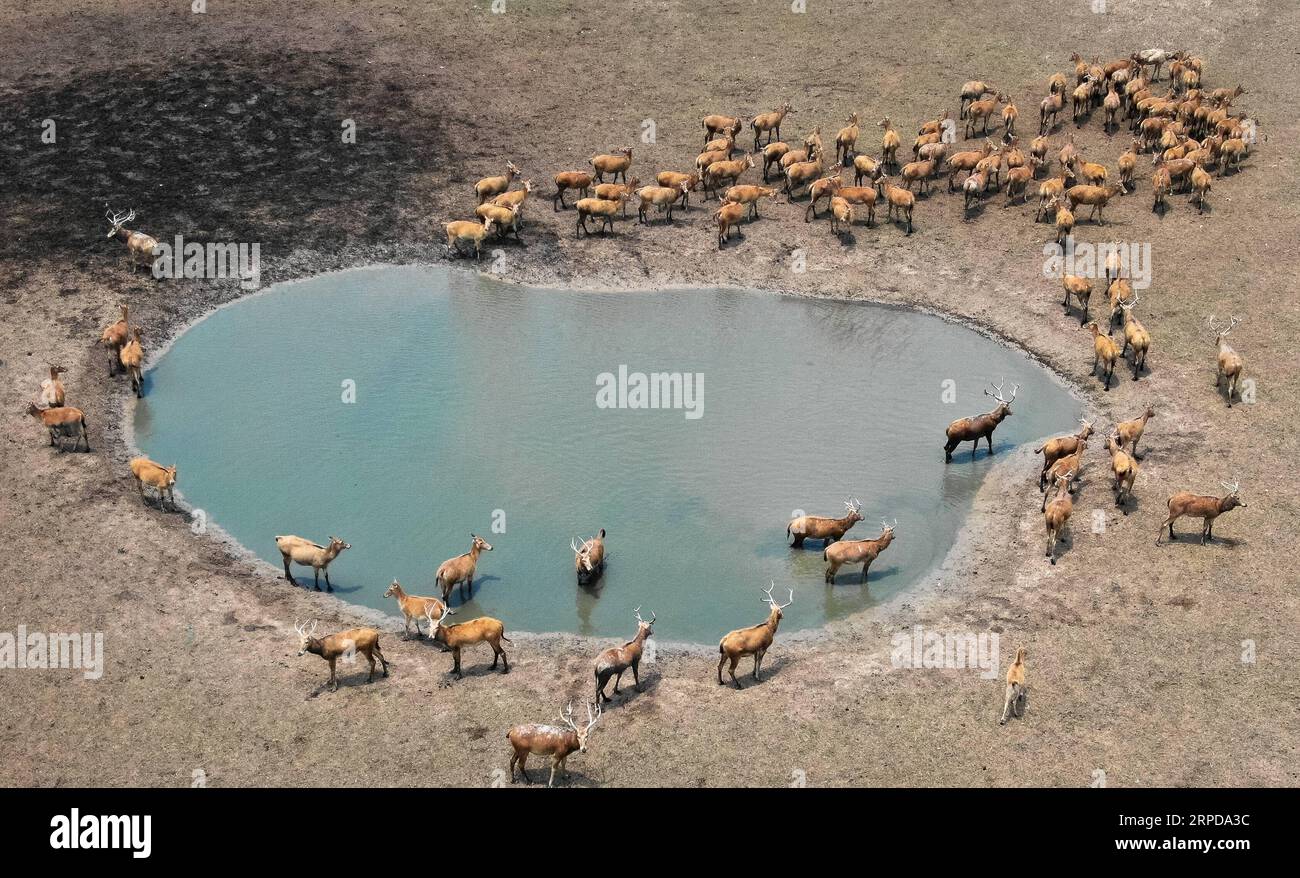
Dafeng Milu Nature Reserve.
Planning Your Visit: A Practical Guide
Best Time to Visit
The Dafeng Milu Nature Reserve offers unique experiences throughout the year, but the best times to visit depend on what you wish to see:
- November to March: This is the peak season for birdwatching, especially for witnessing the graceful red-crowned cranes as they winter in the area. Make sure to plan your trip during these months for the most rewarding avian encounters.
- March to May: Experience the breathtaking bloom of tulips in the Dutch Flower Sea, which attracts visitors seeking vibrant landscapes and floral photography.
- Year-Round: The milu deer can be seen throughout the year, making any season a good time to explore the reserve. Each season brings its own charm, from lush greenery in spring and summer to the serene beauty of autumn.
Recommended Itinerary
For a well-rounded visit to Dafeng Milu Nature Reserve and its surroundings, consider the following itinerary:
Day 1: Arrival and Flower Sea Exploration
- Morning: Arrive in Yancheng and travel to Dafeng. Visit the Dutch Flower Sea to enjoy the stunning tulip fields.
- Afternoon: Take a stroll through the flower fields, capturing vibrant photos against the backdrop of colorful blooms and windmills.
- Evening: Explore Wuyou Ancient Town, enjoying local street food and the picturesque night light show.
Day 2: Wildlife Encounters
- Morning: Head to Dafeng Milu Nature Reserve. Take a sightseeing car to observe the milu deer in their natural habitat and visit the Milu Deer Museum.
- Afternoon: Visit the Jiangsu Yancheng National Rare Bird Nature Reserve to observe the majestic red-crowned cranes and other migratory birds.
- Evening: Dine at a local farmhouse restaurant, savoring authentic regional dishes.
Day 3: Leisure and Culture
- Morning: Optionally visit the New Fourth Army Memorial Hall or Yancheng Wetland Park for a mix of culture and nature.
- Afternoon: Enjoy some last-minute shopping for local delicacies before heading back.
Photography Tips
- Golden Hours: Capture stunning photographs during the golden hours of sunrise and sunset when the light is soft and warm, perfect for landscape shots.
- Wildlife Photography: Use a telephoto lens to get close-up shots of the milu deer and red-crowned cranes without disturbing them. Patience is key—stand still and wait for the animals to come into view.
- Floral Focus: When photographing tulips, try to include the windmills or the expansive fields in the background for a more dynamic composition.
- Birdwatching Gear: Bring binoculars and a camera with a good zoom feature to capture the various bird species without getting too close.
What to Wear
- Comfortable Shoes: Wear sturdy walking shoes, as you’ll be exploring both the wetlands and the flower fields.
- Layered Clothing: Weather can be unpredictable. Dress in layers to adjust to varying temperatures throughout the day.
- Sun Protection: A wide-brimmed hat, sunglasses, and sunscreen are essential, especially during the spring and summer months.
- Insect Repellent: Consider applying insect repellent to ward off any bugs, particularly in warmer seasons.
Insider Tips
- Advance Booking: Purchase tickets online in advance to avoid long queues and save a few yuan. Look for any discounts available for students or group bookings.
- Local Transportation: Utilize public transport or shared rides to save on transportation costs. City buses are very affordable and connect major attractions.
- Timing Your Visits: For the bird reserve, arrive early in the morning or later in the afternoon when birds are more active, increasing your chances of witnessing stunning wildlife behavior.
- Stay Hydrated: Carry a water bottle, especially when walking through the wetlands or flower fields, as the sun can be intense.
- Engage with Local Culture: Don’t miss out on local delicacies such as Wuyou drunken snails. Ask locals for recommendations on where to find the best street food—this adds an authentic flavor to your experience.
By following this practical guide, you will be well-prepared to explore the natural beauty and unique wildlife of the Dafeng Milu Nature Reserve, enriching your travel experience with memorable encounters and stunning photography opportunities. Enjoy your adventure!

Dafeng Milu Nature Reserve.
Tickets: Prices, Booking, and Tips
When planning your visit to the Dafeng Milu Nature Reserve, understanding the ticketing options, prices, and booking tips is essential for a smooth experience. Below is a detailed overview to help you prepare for your wildlife adventure.
| Ticket Type | Price (CNY) | Includes |
|---|---|---|
| Regular Admission | 48 | Access to the reserve and wildlife viewing |
| Sightseeing Car Ride | 20 | Guided tour within the core free-range area |
| Combined Ticket (Admission + Car) | 68 | Admission and sightseeing car ride |
Booking Your Tickets
You can purchase tickets for the Dafeng Milu Nature Reserve in several ways:
-
Online Booking: The most convenient option is to book your tickets online in advance through various travel platforms or the official reserve website. This not only ensures you have your tickets secured but often allows you to benefit from discounts. Online prices may be slightly lower than at the gate, so it’s worth checking.
-
On-Site Purchase: While you can buy tickets at the entrance, it’s advisable to avoid this method, especially during peak seasons. Long queues may lead to delays in your plans.
-
Group Discounts: If you’re traveling with a larger group, inquire about group discounts directly at the reserve or when booking online. These can significantly reduce your overall costs.
Tips for Booking
-
Plan Ahead: It’s recommended to book your tickets at least a few days in advance, particularly if you are visiting during the winter months when the red-crowned cranes are present, or during the spring tulip season.
-
Check for Discounts: If you are a student, some attractions may offer discounted rates upon presentation of a valid student ID. Always check for available promotions.
-
Timing Your Visit: The best time to visit for a full experience is from November to March for the red-crowned cranes and from March to May for the blooming tulips. Make your reservations accordingly to avoid missing these spectacular sights.
By following these guidelines, you’re sure to have a wonderful time at the Dafeng Milu Nature Reserve, immersing yourself in the beauty of nature and the fascinating wildlife it has to offer. Happy traveling!
How to Get There: A Complete Transportation Guide
Reaching Dafeng Milu Nature Reserve: Your Transportation Guide
If you’re planning a visit to the Dafeng Milu Nature Reserve, you’ll want to ensure a smooth journey to this ecological paradise. This guide will help you navigate your way from major cities, as well as move around the area once you arrive.
From the Nearest Major City
Traveling from Yancheng:
- High-Speed Rail:
- Departure: If you’re coming from major cities like Nanjing, Shanghai, or Hangzhou, the high-speed rail is your best bet.
- Duration: The journey takes approximately 2 to 3 hours.
- Cost: Tickets range from ¥80 to ¥130 depending on your departure city and class of service.
-
Arrival Station: You will arrive at Yancheng Station.
-
From Yancheng Station to Dafeng:
- By Bus:
- Route: Take bus line H1 directly to Dafeng District.
- Duration: The bus ride takes about 50 minutes.
- Cost: Approximately ¥5.
- By Taxi:
- Duration: A taxi ride will take around 40 minutes.
- Cost: Expect to pay around ¥100-150.
Traveling from Other Cities
- From Suzhou:
-
Take the high-speed rail to Yancheng (approximately 2.5 hours, ticket ¥100-150).
-
From Nanjing:
-
The journey is about 2 hours (ticket ¥80-120).
-
From Shanghai:
- Expect a travel time of around 3 hours (ticket ¥120-160).
Getting Around the Scenic Area
Once you’ve arrived at the Dafeng Milu Nature Reserve, getting around is quite straightforward:
- Within the Reserve:
-
Sightseeing Cars: The reserve offers sightseeing cars that take you deep into the free-range area, allowing for up-close encounters with the milu deer.
- Cost: Ticket for the park is ¥48, and the sightseeing car is an additional ¥20.
- Recommended Visit Time: Plan for around 2.5 hours to fully enjoy the experience.
-
Local Transportation:
- Taxis and Ride-Sharing: Taxis are available for hire in the area, and you can also use ride-sharing apps like Didi for a convenient way to get around.
-
Carpooling: Sharing rides with fellow travelers can reduce costs, especially for trips to nearby attractions like the Jiangsu Yancheng National Rare Bird Nature Reserve, which is about 50 minutes away from the Milu Park (approximately ¥80 per person for a round trip).
-
Biking and Walking:
- For eco-conscious travelers, consider renting a bicycle to explore the nearby wetlands or parks at your leisure. Many scenic areas have paved paths suitable for cycling and walking.
Conclusion
Reaching the Dafeng Milu Nature Reserve is convenient and affordable, making it accessible for travelers looking to escape the hustle and bustle of city life. With efficient train services, local buses, and ride-sharing options, you’ll find the journey to this natural sanctuary is just as enjoyable as your time spent observing the incredible wildlife. Embrace the adventure and immerse yourself in the beauty of the wetlands!
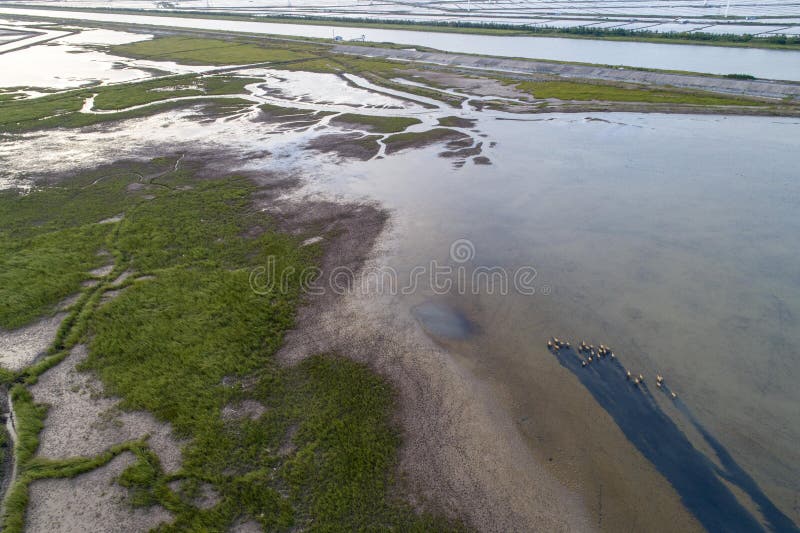
Dafeng Milu Nature Reserve.
Local Cuisine and Accommodation Nearby
Nestled within the picturesque landscapes of the Dafeng Milu Nature Reserve, the region is a treasure trove of local flavors and charming accommodations. After a day spent marveling at the majestic milu deer and diverse wildlife, travelers can indulge in authentic culinary experiences or relax in comfortable lodgings.
Culinary Delights to Savor
-
Wuyou Drunken Snails
A local delicacy, these snails are marinated in glutinous rice wine, resulting in a sweet and savory flavor that’s both unique and addictive. Often enjoyed as a street food snack, they offer a delightful taste of the region’s culinary heritage. -
Fish Soup Noodles
A comforting dish, this noodle soup features a rich, milky broth infused with the essence of dried shrimp and fresh cilantro. It’s a favorite among locals for its warmth and depth of flavor, perfect after a long day of exploring. -
Braised Old Goose
This dish showcases tender, slow-cooked goose meat, often served with a side of seasonal vegetables. Its rich flavor profile is a must-try for meat lovers looking to experience a taste of the local cuisine. -
Stir-Fried Asparagus with Wild Vegetables
A lighter option, this dish combines fresh asparagus with wild vegetables, creating a vibrant and healthy accompaniment to any meal. It reflects the region’s agricultural bounty and commitment to fresh, seasonal ingredients.
Where to Stay
Luxury Option: Jiangsu Yancheng Grand Hotel
For those seeking a lavish experience, the Jiangsu Yancheng Grand Hotel offers opulent rooms with stunning views of the surrounding wetlands. Guests can enjoy top-notch amenities, including a spa, fine dining, and easy access to the Dafeng Milu Nature Reserve.
Boutique Choice: Huajiantang Flower Sea Homestay
This charming homestay provides a cozy, rustic atmosphere with personalized service. Located near the Dutch Flower Sea, it offers uniquely decorated rooms and home-cooked meals, allowing travelers to immerse themselves in the local culture while enjoying the beauty of the area.
Budget-Friendly: All Seasons Hotel (Dafeng Branch)
Ideal for budget-conscious travelers, this hotel offers clean, comfortable accommodations at an affordable price. With convenient access to local attractions and a friendly atmosphere, it’s a great base for exploring the milu deer reserve and the vibrant local scenes.
Whether indulging in the unique flavors of Yancheng or unwinding in one of its welcoming lodgings, visitors to the Dafeng Milu Nature Reserve are sure to create lasting memories of both taste and comfort.
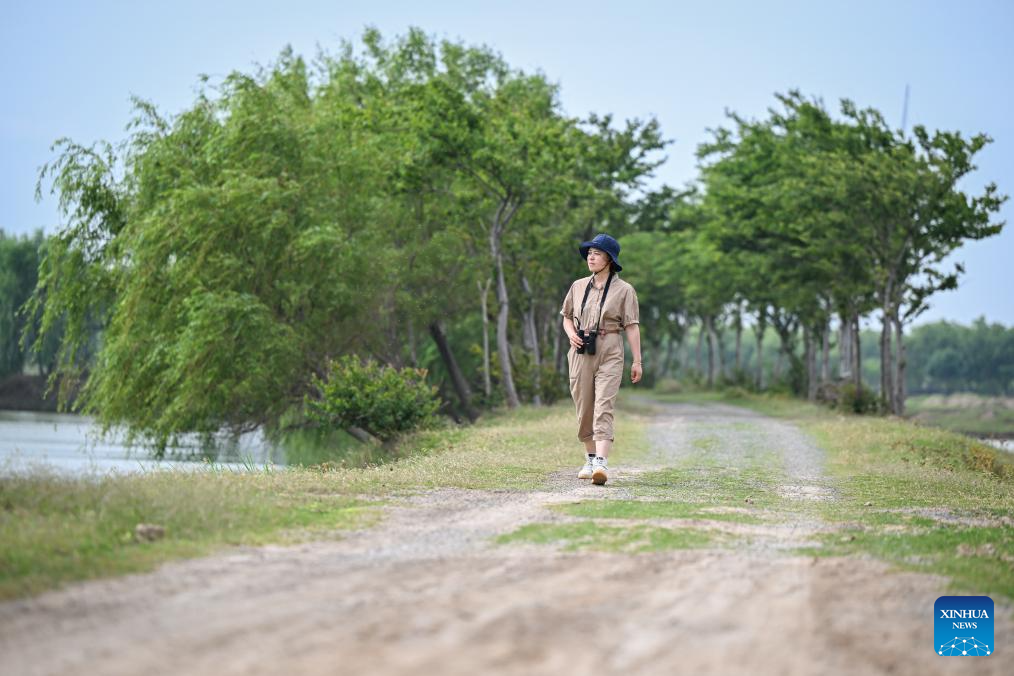
Dafeng Milu Nature Reserve.
Frequently Asked Questions
Frequently Asked Questions about Dafeng Milu Nature Reserve
-
Is Dafeng Milu Nature Reserve suitable for children and the elderly?
Yes, the reserve is family-friendly and offers a safe environment for children and the elderly. The walking paths are well-maintained, and there are sightseeing cars available to help those who may have difficulty walking. Just ensure to monitor young children near wildlife. -
Are there English signs and guides available at the reserve?
While the primary language is Chinese, many signs are bilingual, featuring both Chinese and English. Additionally, some staff members can communicate in English, although it’s advisable to have a translation app handy for more complex inquiries. -
How much time should I plan to spend at the reserve?
A visit typically lasts between 3 to 4 hours, which allows ample time to explore the free-range areas, take a sightseeing car tour, and enjoy the Milu Deer Museum. If you want a more leisurely experience, consider allocating additional time. -
What is the best time of year to visit the reserve?
The reserve is lovely year-round, but the best time to visit is from November to March for the red-crowned cranes, which migrate here for winter. Spring (March to May) also offers beautiful views with blooming flowers and lush greenery. -
What should I wear and bring when visiting the reserve?
Comfortable clothing and sturdy walking shoes are recommended, as you’ll be exploring various terrains. Bring a hat, sunscreen, and insect repellent, especially in warmer months. Binoculars for birdwatching and a camera are also great additions to enhance your experience. -
Are there dining options available within the reserve?
Yes, there are several dining options nearby, including farmhouse-style restaurants that serve local dishes. However, it’s advisable to check opening hours in advance, as they may vary. -
Is it necessary to purchase tickets in advance?
While you can buy tickets on-site, purchasing them in advance online might save you some time and money. Special discounts are often available for online purchases, and it guarantees your entry on busy days. -
How do I get to the reserve from Yancheng city?
The reserve is approximately 40 km from Yancheng city. You can take a taxi or use a carpool service, which is both economical and convenient. Public transport options may be limited, so plan accordingly for a smooth journey.
Final Thoughts on Your Trip
As your journey through the enchanting landscapes of Dafeng Milu Nature Reserve comes to a close, take a moment to reflect on the invaluable experiences you’ve gathered. Here, amidst the harmonious blend of woodlands, grasslands, and shimmering marshlands, you’ve had the rare opportunity to witness the majestic milu deer in their natural habitat, alongside the graceful dance of red-crowned cranes and other exquisite wildlife.
This natural sanctuary not only offers a glimpse into the life of these magnificent creatures but also invites you to immerse yourself in the tranquility of the wetlands, a true ecological treasure waiting to be explored. From the vibrant tulip fields of the Dutch Flower Sea to the rich cultural heritage of nearby towns, every aspect of your visit is a testament to the beauty of nature and the importance of conservation.
Remember, the spirit of Dafeng is not merely in the sights you’ve seen but in the connection you’ve fostered with the environment. As you leave, carry with you the essence of this place—its wild calls, serene landscapes, and the deeper understanding that adventure and preservation go hand in hand.
May your heart echo with the calls of the cranes and the soft rustle of deer as you share these memories and inspire others to partake in the beauty of our planet. The world is vast and filled with wonders; let this be just one chapter in your ongoing journey of discovery and appreciation for nature. Safe travels!